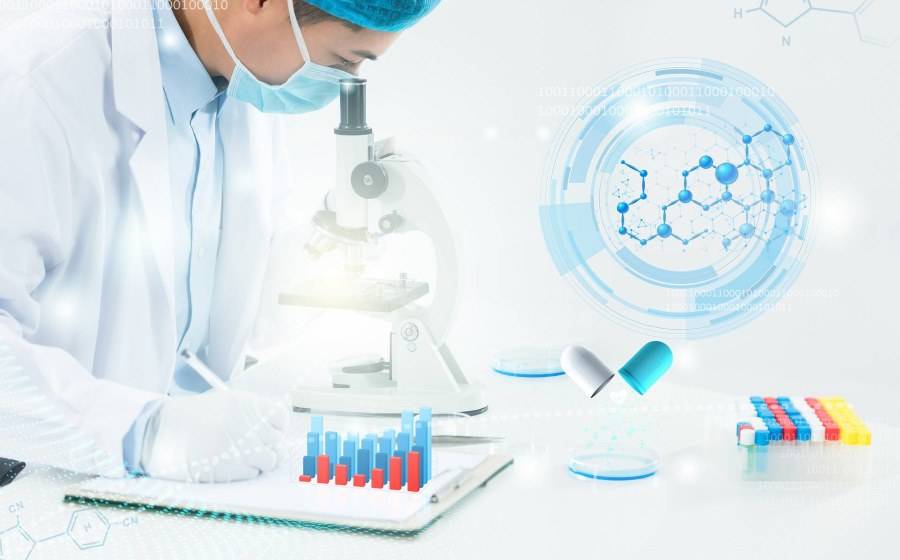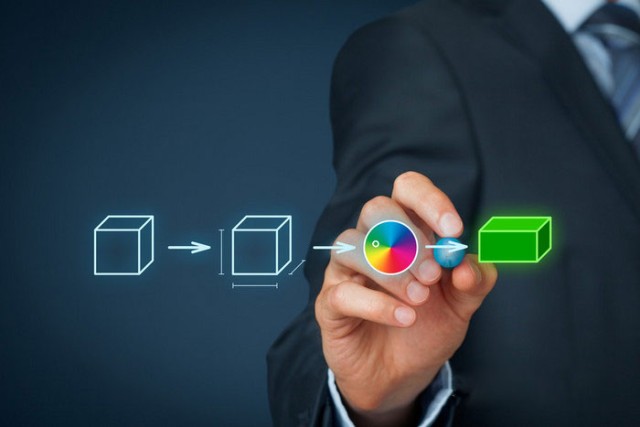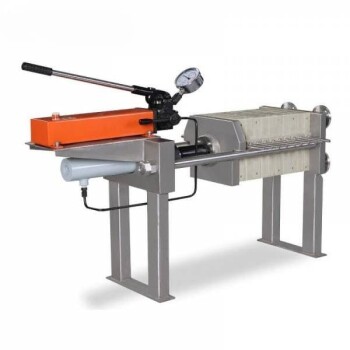Introduction to Integrated Manual Heated Lab Pellet Presses
Integrated manual heated lab pellet presses are indispensable tools in scientific research and analysis, offering precise control and efficient sample preparation. This comprehensive guide delves into the intricacies of these presses, exploring their mechanisms, key features, and customization options tailored to diverse research needs. From pharmaceutical development to spectroscopy and bomb calorimetry, these presses demonstrate unparalleled versatility and efficiency. Discover how these innovative devices enhance sample uniformity and consistency, and learn about their benefits compared to other laboratory presses. Join us as we uncover the future trends and innovations shaping the landscape of lab pellet press technology.
Understanding the Mechanism of Integrated Manual Heated Lab Pellet Presses
Integrated manual heated lab pellet presses are essential tools in laboratories for creating uniform pellets from various sample materials. These presses combine hydraulic action with temperature control mechanisms to ensure precise and efficient pellet formation. Understanding the detailed operation of these presses is crucial for obtaining reliable and reproducible results in applications such as spectroscopy, material testing, and quality control.
Hydraulic Action
The hydraulic mechanism in these presses is the core of their operation. It involves a cylinder filled with hydraulic oil that supplies pressure to a moving piston. The pressure is applied using a hand-operated pump, which allows for controlled and adjustable force application. The material to be compressed, typically placed in a pellet die, is positioned centrally on the piston. By slowly turning the leadscrew at the top of the press, the piston is raised to apply a force to the material. This action compresses the sample into a pellet with a uniform thickness and density.
The hydraulic system is designed to provide a consistent and reliable pressure, which is crucial for ensuring the quality of the pellets. The pressure can be adjusted by manipulating the hand pump, allowing for customization based on the specific requirements of the sample material. Once the desired pressure is achieved, the release valve is turned to release the pressure, enabling the removal of the pellet from the die.
Temperature Control Mechanisms
Temperature control is another critical aspect of integrated manual heated lab pellet presses. These presses are equipped with heating elements that can be regulated to maintain a specific temperature range. This feature is particularly important for samples that require heat to achieve optimal pelletization, such as certain polymers and organic materials.
The temperature control system typically includes a thermostat and a heating element integrated into the press. The thermostat allows for precise temperature setting and monitoring, ensuring that the sample is heated to the desired level without overheating. This controlled heating process helps in achieving a uniform and consistent pellet structure, which is essential for accurate analysis and testing.

Operation Procedure
The operation of an integrated manual heated lab pellet press involves several steps to ensure safe and effective pellet formation. Here is a detailed procedure:
- Preparation of the Workspace: Ensure that the area around the press is clear and free of obstructions. This is crucial for safety and ease of operation.
- Placement of the Workpiece: Place the pellet die containing the sample material centrally on the piston.
- Application of Pressure: Slowly turn the leadscrew to bring the nose of the leadscrew onto the top of the workpiece. Use the handle to pump hydraulic oil into the piston, gradually applying pressure.
- Achieving Desired Pressure: Continue pumping until the desired pressure is achieved. The pressure should be adjusted based on the specific requirements of the sample.
- Release of Pressure: Once the desired pressure is achieved, turn the release valve to release the pressure. This allows for the safe removal of the pellet from the die.
- Temperature Control: If the sample requires heating, set the thermostat to the desired temperature and allow the heating element to warm the sample to the optimal level.
- Removal of the Pellet: After releasing the pressure and ensuring the sample is at the correct temperature, carefully remove the pellet from the die.
Benefits of Integrated Manual Heated Lab Pellet Presses
Integrated manual heated lab pellet presses offer several benefits that make them indispensable in laboratory settings:
- Precision and Control: The hydraulic and temperature control mechanisms provide precise and adjustable pressure and heat, ensuring consistent pellet quality.
- Versatility: These presses can handle a wide range of sample materials, making them suitable for various applications in different fields such as pharmaceuticals, materials science, and chemistry.
- Efficiency: The integrated design allows for efficient and streamlined pellet formation, saving time and effort in sample preparation.
- Safety: The controlled operation and safety features, such as the release valve and thermostat, ensure safe and reliable use.
In conclusion, integrated manual heated lab pellet presses are sophisticated tools that combine hydraulic action and temperature control to produce high-quality pellets. Understanding their mechanism and operation is essential for obtaining reliable and reproducible results in laboratory applications. These presses offer precision, versatility, efficiency, and safety, making them invaluable assets in any laboratory setting.
Key Features and Customization Options
Integrated manual heated lab pellet presses are essential tools in various research settings, offering a combination of precision, flexibility, and efficiency. These presses are designed to handle a range of materials and applications, from creating uniform pellets for XRF or IR spectroscopy to preparing samples for destructive testing. Key features and customization options are critical to ensuring that these presses meet the specific needs of different research projects.
Capacity and Die Sizes
One of the primary considerations when selecting a lab pellet press is the capacity and die sizes available. KINTEK, a leading manufacturer in this field, offers presses with capacities ranging from 20 to 200 kN. This wide range allows researchers to choose a press that matches their specific load requirements, whether it's for small-scale experiments or large-scale production. The dies are available in various sizes, including 12, 13, 25, 31, and 40 mm, ensuring that samples can be prepared with the necessary precision and uniformity.
Heating Platens
Heating platens are another crucial feature, especially for applications that require heat treatment. KINTEK's presses can heat up to 300 °C, with a standard stroke of 100 mm, which can be adapted up to 200 mm as needed. These heated platens ensure uniform temperature distribution over the platen surface, which is essential for maintaining consistent sample characteristics. The ability to control and customize the temperature settings allows for greater flexibility in processing different materials.
Customization Options
Customization is key to meeting the diverse needs of researchers. KINTEK provides a range of customization options, including different capacities, die sizes, and heating platens. For laboratories with space restrictions, benchtop models are available, offering the same high-quality performance in a more compact design. Additionally, both automatic and hand-operated models are offered, allowing for greater flexibility in terms of automation and manual control.

Mechanical and Hydraulic Systems
The mechanical structure of these presses is robust, featuring four columns with a 60 mm diameter and a sliding platen driven by self-lubricating bushings. This design ensures mechanical solidity and stability, which is crucial for maintaining constant sample thickness and consistent closure force. The hydraulic system, with a 25-ton closure force, provides the necessary pressure for creating high-quality pellets.
Safety and Ease of Use
Safety is a priority in laboratory settings, and KINTEK's presses are designed with this in mind. Features such as protection doors with safety locks and CE labeling ensure that the equipment meets safety standards. The PLC controller with a user-friendly touch screen display allows for easy definition of the molding cycle, making it simple for researchers to operate and customize the press according to their needs.
Applications
The versatility of these presses extends to various applications, including pelletizing, fluid extraction, pressure forming, and destructive testing. For tasks that require a large number of homogeneous samples, automation is available, providing a more efficient and less tedious option compared to manual completion. KINTEK's automatic laboratory presses, which can easily sit on a laboratory benchtop, offer a scalable solution for different research requirements.
In conclusion, integrated manual heated lab pellet presses from KINTEK offer a comprehensive range of features and customization options to meet the diverse needs of researchers. With capacities ranging from 20 to 200 kN, various die sizes, and the ability to heat up to 300 °C, these presses provide the precision, flexibility, and efficiency required for high-quality research. Whether for small-scale experiments or large-scale production, these presses are designed to deliver consistent and reliable results.
Applications of Integrated Manual Heated Lab Pellet Presses
Integrated manual heated lab pellet presses are versatile tools that find extensive use across various scientific fields, including pharmaceutical development, spectroscopy, and bomb calorimetry. These presses are designed to transform powdered materials into compressed pellets, which are essential for numerous analytical and experimental processes.
Pharmaceutical Development
In the pharmaceutical industry, pellet presses are crucial for creating uniform tablets and capsules. The ability to control the pressure and temperature during the pressing process ensures that the active pharmaceutical ingredients (APIs) are uniformly distributed, which is vital for consistent dosing and bioavailability. According to industry standards, the uniformity of dosage units is a critical factor in drug efficacy and safety. Integrated manual heated lab pellet presses allow researchers to fine-tune these parameters, thereby enhancing the quality and reliability of pharmaceutical products.

Spectroscopy
Spectroscopy applications, particularly in infrared (IR) and x-ray fluorescence (XRF) spectroscopy, benefit significantly from the use of pellet presses. In IR spectroscopy, powdered samples mixed with potassium bromide (KBr) are compressed into transparent pellets, which are then analyzed to determine the chemical composition and structure of the sample. The uniformity and clarity of these pellets are directly influenced by the pressing conditions, making integrated manual heated lab pellet presses indispensable for high-quality spectroscopic analysis.
Similarly, in XRF spectroscopy, inorganic samples are pressed into pellets or briquettes to ensure a flat, homogeneous surface for accurate elemental analysis. The use of a pellet press ensures that the sample is compacted to a density that optimizes the interaction between the x-rays and the sample material, leading to precise and reproducible results.
Bomb Calorimetry
Bomb calorimetry is another critical application where pellet presses play a pivotal role. This technique is used to determine the heat of combustion of organic compounds. Finely powdered samples, such as benzoic acid, must be pelletized for safe and efficient combustion. Pelletizing these materials has several advantages: it reduces the risk of dangerously high burning rates, ensures complete combustion by keeping the sample in the combustion zone, and simplifies sample handling and weighing.
The use of integrated manual heated lab pellet presses in bomb calorimetry ensures that the samples are uniformly compressed, leading to consistent and reliable calorimetric measurements. This is particularly important for industries that rely on accurate energy content determinations, such as the food and fuel sectors.
Additional Applications
Beyond the primary applications, integrated manual heated lab pellet presses are also used in various other tasks, such as pill making, laminating, and creating thin polymer films for transmission sampling by IR spectroscopy. The versatility of these presses lies in their ability to accommodate a wide range of die sizes and configurations, allowing for customized pellet shapes and sizes as per specific experimental requirements.
In conclusion, integrated manual heated lab pellet presses are indispensable tools in modern scientific research and development. Their ability to produce high-quality, uniform pellets makes them vital for applications ranging from pharmaceutical development to spectroscopy and bomb calorimetry. The precision and control offered by these presses ensure that researchers can achieve accurate and reproducible results, thereby advancing scientific knowledge and industrial applications.
Benefits of Using Integrated Manual Heated Lab Pellet Presses
Integrated manual heated lab pellet presses offer a range of advantages that enhance the quality and efficiency of laboratory operations, particularly in applications such as XRF analysis. These benefits include improved sample uniformity, consistency, and ease of operation, which are crucial for obtaining reliable and accurate analytical results.
Improved Sample Uniformity and Consistency
One of the primary benefits of using integrated manual heated lab pellet presses is the enhanced uniformity and consistency of the samples. This is particularly important in analytical techniques like XRF, where sample homogeneity directly impacts the accuracy of the results. The controlled heating and pressing mechanisms of these presses ensure that each pellet is uniformly compressed and heated, leading to more reliable analytical data.
Ease of Operation
Integrated manual heated lab pellet presses are designed with user-friendliness in mind. They typically feature straightforward controls and require minimal training to operate effectively. This ease of operation not only saves time but also reduces the potential for operator errors, which can compromise the integrity of the analytical results.

Cost-Effectiveness
Despite their advanced capabilities, integrated manual heated lab pellet presses are often more cost-effective than their automated counterparts. They require lower upfront investment and have fewer maintenance requirements. Additionally, the operational simplicity of these presses reduces the need for extensive training, further lowering the overall cost of sample preparation.
Flexibility in Sample Preparation
These presses offer significant flexibility in terms of the types of samples that can be prepared. They can handle a wide range of materials, including those with different characteristics and shapes. This versatility makes them suitable for various laboratory applications beyond XRF analysis, such as materials science and environmental testing.
Reduced Cycle Times
Integrated manual heated lab pellet presses can significantly reduce cycle times compared to more complex automated systems. The streamlined operation allows for quicker sample preparation, which is particularly beneficial in busy laboratories where high throughput is essential. This efficiency not only improves productivity but also ensures that samples are prepared and analyzed in a timely manner.
Enhanced Throughput
The ability to produce samples very fast using integrated manual heated lab pellet presses contributes to increased throughput. This is especially advantageous in laboratories that frequently run XRF measurements on a large quantity of samples. The presses' design, which includes integrated pellet dies and swifter operations, facilitates repeated use and rapid sample turnover.
Conclusion
In summary, integrated manual heated lab pellet presses provide numerous benefits that enhance laboratory efficiency and sample quality. These advantages include improved sample uniformity and consistency, ease of operation, cost-effectiveness, flexibility in sample preparation, reduced cycle times, and enhanced throughput. By leveraging these benefits, laboratories can achieve more reliable and accurate analytical results, making integrated manual heated lab pellet presses an invaluable tool in modern scientific research and analysis.
Comparison with Other Types of Laboratory Presses
Laboratory presses are essential tools for various research and testing applications, including the preparation of samples for techniques like FTIR and XRF. These presses come in different configurations, each with its unique advantages and disadvantages. This section will delve into the comparison between integrated manual heated lab pellet presses and other types, such as automatic and screw press configurations.
Integrated Manual Heated Lab Pellet Presses
Integrated manual heated lab pellet presses are designed for applications that require both pressure and heat to form pellets from powdered materials. These presses typically feature a hand-operated lever to apply pressure and a heating mechanism to control the temperature of the platens. The primary advantage of these presses is their simplicity and cost-effectiveness. They are often less expensive than their automatic counterparts and do not require complex electronic controls.
However, manual presses require more physical effort to operate, which can be a drawback for frequent use. Additionally, the pressure applied can vary slightly with each use, leading to less consistency in sample preparation. Despite these limitations, manual presses are suitable for laboratories with infrequent use or budget constraints.
Automatic Hydraulic Presses
Automatic hydraulic presses are equipped with electric motors to drive the pump and electronic controls to manage the pressure application. These presses offer high accuracy and repeatability, making them ideal for applications that require precise and consistent sample preparation. The automation also reduces the physical effort required, making them more suitable for high-volume laboratories.
The primary disadvantage of automatic presses is their higher cost. They are more expensive to purchase and maintain due to their electronic components. However, the benefits of increased accuracy and reduced operator fatigue often outweigh the higher initial investment.

Screw Press Configurations
Screw press configurations use a mechanical screw mechanism to apply pressure. These presses are known for their durability and simplicity, as they do not require hydraulic oil or electronic controls. Screw presses are typically more compact and easier to maintain than hydraulic presses.
However, screw presses may not offer the same level of pressure control as hydraulic presses. The pressure application can be less consistent, which might affect the quality of the prepared samples. Additionally, screw presses can be more labor-intensive to operate, similar to manual hydraulic presses.
Comparative Analysis
When choosing a laboratory press, it is crucial to consider the specific needs of your laboratory. Here is a summary of the key points to consider:
- Cost: Manual presses are generally the most cost-effective option, followed by screw presses, with automatic hydraulic presses being the most expensive.
- Accuracy and Repeatability: Automatic hydraulic presses offer the highest level of accuracy and repeatability, followed by manual heated presses, with screw presses typically providing the least consistent pressure application.
- Physical Effort: Manual and screw presses require more physical effort to operate, whereas automatic hydraulic presses are more operator-friendly.
- Maintenance: Screw presses are generally easier to maintain due to their simplicity, while automatic hydraulic presses require more attention due to their electronic components.
In conclusion, the choice between integrated manual heated lab pellet presses, automatic hydraulic presses, and screw press configurations depends on the specific requirements of your laboratory. Manual presses are ideal for budget-conscious laboratories with infrequent use, automatic hydraulic presses are suitable for high-volume laboratories requiring precise and consistent sample preparation, and screw presses offer a balance of simplicity and durability for medium-volume applications. By understanding the strengths and limitations of each type, you can make an informed decision that best suits your laboratory's needs.
Maintenance and Troubleshooting Tips
Maintaining and troubleshooting integrated manual heated lab pellet presses is crucial for ensuring their longevity and optimal performance. These presses are designed to withstand high pressures and temperatures, which can lead to wear and tear over time. Here are some detailed maintenance and troubleshooting tips to help you keep your lab pellet press in top condition.
Regular Inspections
1. Leaking Hoses and Seals: Regularly inspect the hoses and seals for any signs of leakage. Over time, these components can degrade due to the constant heat and pressure. If you notice any leaks, it’s essential to replace the affected parts immediately to prevent further damage.
2. Cracks and Excessive Vibration: Check the structural integrity of the press for any cracks or signs of excessive vibration. Cracks can compromise the press's ability to handle high pressures, while excessive vibration can indicate issues with the internal mechanisms. Addressing these issues promptly can prevent more significant problems down the line.
3. Cleanliness: Keep the working parts of the press clean from dirt, oil, and other fluids. Dirt and leaking fluids can interfere with the press's operation and lead to premature wear. Regular cleaning and proper lubrication are essential for maintaining the press's efficiency.
Hydraulic Fluid Maintenance
4. Hydraulic Fluid Replacement: Over time, the hydraulic fluids in the press will degrade and require replacement. Using the correct type of hydraulic oil is crucial for maintaining the press's performance. Consult the manufacturer’s guidelines for the recommended type and frequency of fluid replacement.

Temperature and Pressure Control
5. Temperature Control: Ensure that the press can maintain the desired temperature range consistently. Inaccurate temperature control can affect the quality of the pellets produced. Regularly calibrate the temperature controls to ensure they are functioning correctly.
6. Pressure Gauge Accuracy: The pressure gauge is a critical component for ensuring safe and effective pressing. Regularly check the accuracy of the pressure gauge and calibrate it if necessary. An inaccurate gauge can lead to overloading or underloading, both of which can damage the press and produce substandard pellets.
Troubleshooting Common Issues
7. Stuck Pellets: If pellets get stuck in the die, it can be challenging to remove them without causing damage. To prevent this, ensure that the die is properly lubricated before use. If a pellet does get stuck, use the appropriate tools to gently remove it without damaging the die.
8. Inconsistent Pellet Quality: Inconsistent pellet quality can be a sign of various issues, including improper temperature control, inaccurate pressure settings, or wear in the die. Troubleshoot by checking each of these factors and making necessary adjustments.
9. Electrical Issues: If the press is not heating or the controls are not functioning, check the electrical connections and components. Ensure that all connections are secure and that there are no signs of damage or wear.
Preventive Maintenance Schedule
To keep your lab pellet press in optimal condition, establish a preventive maintenance schedule. This should include regular inspections, cleaning, lubrication, and calibration of critical components. By following a consistent maintenance schedule, you can prevent many common issues and extend the lifespan of your press.
In conclusion, maintaining and troubleshooting integrated manual heated lab pellet presses requires a proactive approach. By regularly inspecting and maintaining the press, you can ensure its longevity and optimal performance. Addressing issues promptly and following a preventive maintenance schedule are key to producing high-quality pellets and avoiding costly repairs.
Future Trends and Innovations in Lab Pellet Press Technology
The field of lab pellet press technology is witnessing significant advancements, particularly in the areas of automation and temperature control, which are poised to revolutionize the way samples are prepared and analyzed in laboratories. These innovations not only enhance the efficiency and accuracy of the pellet preparation process but also address the challenges associated with reproducibility and consistency.
Automation in Pellet Press Technology
Automation is a key trend in lab pellet press technology, offering numerous benefits such as increased throughput, reduced labor, and improved consistency. Automated hydraulic presses, available in various configurations (30, 40, and 60 tonnes), can operate autonomously once programmed, allowing technicians to focus on other tasks. This feature is particularly advantageous in busy laboratories where frequent pressing work is required. Automated presses are also more accurate and consistent than their manual counterparts, as they eliminate variable factors during use.
For laboratories conducting X-ray fluorescence (XRF) measurements on a large quantity of samples, high-throughput hydraulic presses specifically adapted for XRF pellet preparation are becoming increasingly popular. These presses feature integrated pellet dies and have swifter operations for repeated use, focusing on automations and mechanical systems for quickly extracting the pellet and preparing for the next sample.
Temperature Control Innovations
Temperature control is another critical area of innovation in lab pellet press technology. The process of pelletization involves high pressure and associated temperature, which can affect the quality and consistency of the pellets. Advanced pellet presses now incorporate sophisticated temperature control systems to ensure that the pellets are produced under optimal conditions. This is particularly important for materials with specific temperature requirements, such as biomass, where the lignin component plasticizes and acts as a binder at high temperatures.
Customization and Flexibility
Customization and flexibility are also becoming increasingly important in lab pellet press technology. Manufacturers like KINTEK offer a range of presses tailored to different industry or research needs, whether for large runs of the same powder or the production of single pellets one at a time. Benchtop presses, in particular, are gaining popularity due to their smaller footprint and the same customization options and high quality as larger presses. These benchtop models are available in both automatic and hand-operated versions, with various optional features for greater customization to the task at hand.
Reproducibility and Consistency
Ensuring reproducibility and consistency in sample preparation is a major focus in lab pellet press technology. Errors due to variations in X-ray intensity can be minimized by keeping the sample amount and pressure constant for each pellet. Advanced presses now offer features that allow for precise control over these variables, further improving the reproducibility of the sample preparation process. Additionally, the slow expansion of the compressed ring and sample after pressure release can be managed to prevent height differences between the sample surface and ring, which can affect X-ray intensity or lead to pellet breakage.
Conclusion
The future of lab pellet press technology is bright, with significant advancements in automation and temperature control leading the way. These innovations are enhancing the efficiency, accuracy, and reproducibility of the pellet preparation process, making them invaluable tools for researchers and technicians in various fields. As the technology continues to evolve, we can expect even more sophisticated and specialized presses to emerge, further revolutionizing the way samples are prepared and analyzed in laboratories.
Related Products
- Heated Hydraulic Press Machine with Integrated Manual Heated Plates for Lab Use
- Heated Hydraulic Press Machine with Heated Plates Split Manual Laboratory Hot Press
- Automatic Heated Hydraulic Press Machine with Heated Plates for Laboratory Hot Press 25T 30T 50T
- 30T 40T Split Automatic Heated Hydraulic Press Machine with Heated Plates for Laboratory Hot Press
- Heated Hydraulic Press Machine with Heated Plates for Vacuum Box Laboratory Hot Press
Related Articles
- How to choose a laboratory hot press
- Automatic flat plate heat press operating steps
- Hydraulic Heated Lab Pellet Press: Comprehensive Guide to Selection and Usage
- Comprehensive Guide to Manual Hydraulic Pellet Press
- Automatic Hydraulic Press: The Ultimate Guide for Efficient Sample Preparation and Industrial Processes



















